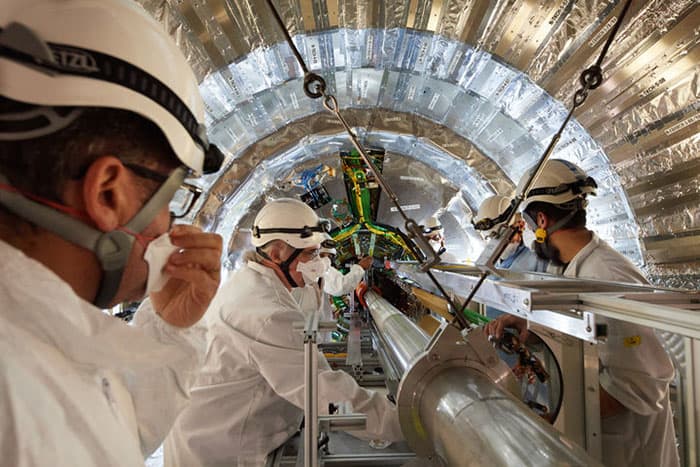Flash Physics is our daily pick of the latest need-to-know developments from the global physics community selected by Physics World‘s team of editors and reporters

Musical vibrato analysed using quantum-physics technique
Vibrato – the controlled oscillation of the pitch of a musical instrument or voice – has been analysed by researchers at Queen Mary University of London in the UK using a technique originally developed for atomic and molecular physics. Musical vibratos usually involve modulating the pitch of a note by as much as a semitone at a rate of about 4–8 Hz. Because most vibratos only last a second or so, it is difficult to analyse the nature of the sound waves because the signals include only a few vibrato cycles. Now, Luwei Yang, Elaine Chew, Khalid Rajab and colleagues have characterized vibratos using the filter diagonalization method (FDM). This was originally developed to study quantum-mechanical resonances of atoms and molecules from time-sequence data, particularly from nuclear magnetic resonance experiments. “Although musical signals are very different from their quantum counterparts, mathematically they share many similarities, including the characteristics of their resonances,” says Rajab. “In fact, we found that, because they oscillate with time, the harmonics in musical signals can be more complicated to analyse than their quantum counterparts.” The project focussed on understanding the differences between the violin and the erhu, which is a two-stringed Chinese fiddle. Chew explains: “When music for a folk instrument like the erhu is performed on a violin, it lacks the stylistic and expressive qualities of the original.” “One of the major sources of these differences lies in the way in which notes are elaborated (with vibrato) and the way in which the instrumentalists make their transitions between notes (using portamentos),” she adds. “We were interested in creating computing tools that can help reveal these differences.” The research is described in the Journal of Mathematics and Music.
Women turn to biology after taking basic physics course
A survey of almost 10,000 undergraduates at the University of Auckland in New Zealand has found that women are more likely to choose to study life sciences after taking a first-year physics course, rather than progressing further in the physical sciences. Carried out by Auckland physicist Dion O’Neale and colleagues, the study did not find the same effect in men. The research could help to explain why women are significantly underrepresented in fields like physics, but not in subjects such as biology or medicine. The team examined five years of records of all students who took at least one physics course, looking in particular for relationships between gender, course selection and performance. They found that male students were twice as likely to go on to study physical-science subjects such as physics after taking a stage-one “Advancing Physics” course, while women were around 2.5 times more likely to progress in life-science subjects instead. The researchers propose that women are socially discouraged from seeing physics as a realistic and suitable study option. They also say that female students may feel they would be better off in the life sciences, where there are more women to act as role models, the perception of a better work/life balance and the sense that stereotypical women’s traits might be more valued. The study is described in a preprint on arXiv.
CMS completes particle-tracker upgrades

Scientists at CERN’s Large Hadron Collider (LHC) have completed a major upgrade to the Compact Muon Solenoid (CMS) – one of four main detectors at the facility. The work focussed on CMS’s particle-tracking system – consisting of the pixel tracker and the strip tracker – that determines the trajectories of charged particles. The upgrade will allow CMS to take advantage of numerous and ongoing upgrades to the LHC. The bulk of the work involved removing the original pixel tracker – which makes up the innermost part of CMS – and replacing it with a brand-new system. The new pixel tracker is a four-layer device with 124 million silicon pixels, whereas the device it replaced only had three layers. The additional layer is designed to cope with the higher collision rates planned for upcoming runs of the LHC. The upgrades will increase CMS’s ability to make precise measurements on the properties of the Higgs boson and aid in the search for physics beyond the Standard Model. Engineers began the upgrade in December when the LHC was shut down for the winter. The LHC is expected to start collisions in April.
- You can find all our daily Flash Physics posts in the website’s news section, as well as on Twitter and Facebook using #FlashPhysics. Tune in to physicsworld.com later today to read today’s extensive news story on missing dark matter.


